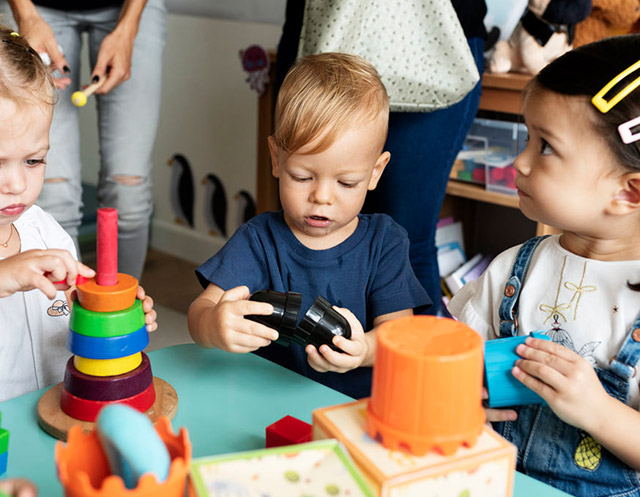The learning environment here at Little Learners Centre is an important focus for our Team because we know how much of an impact our spaces can have for creating a sense of place, and thus belonging. Designing play invitations, setting up new play spaces and learning centres, moving furniture around/changing the layout and using walls in transient ways to display and communicate the curriculum, are some of the small ways in which we reflect critically on the dynamics of your child’s learning context.
Much time has been spent discussing how we can prepare and provide a setting which is enchanting, inviting, challenging, open and yet sensitive to the diverse needs of diverse learners. The toys, furniture, resources and layouts have been carefully considered to develop a characteristic ‘feel’ that we would hope, welcomes children and families and creates a warm, positive experience of learning and connection to the community.
We think carefully about sensory-scapes and the way an environment influences/impacts the human sense/s and as a result, dis/engages children. The sound, vision, touch and even aroma, is important to us. As is the development of internal senses:
- Vestibular (balance and equilibrium)
- Proprioceptive (body position in space)
- Kinaesthetic (movement)
- Baric (weight)
- Thermic (temperature)
(Gascoyne & Raban 2012, p.14)
‘In the early years, the environment is the curriculum.’ (Lewin-Benham 2011, p.67). When paired with high quality pedagogical practice, we believe our centre provides a unique sense of calm and joy. Calm is important to us for one primary reason. Given the diverse and multiple crescendos, subtleties and undercurrents which take place across a day for a child in care, the world of school can be overwhelming at times- filled with sensory input that can be challenging for even an adult to filter. Fostering a sense of calm, allows us to connect with children without interruption. We build from this sense of calm by establishing familiarity, drawing connections between the home and care environment, with the joyful promise of curiosity, exciting new adventures and endless opportunities. To do this, we regularly audit our learning spaces to ensure they provide a secure sense of place which is dependable and conducive to learning and wellbeing. We do this by reflecting critically, in collaboration with peers and critical literacy. At Little Learners, we aspire to create:
- Environments that celebrate the wonder and diversity of nature
- Colour palettes that soothe, subtly harmonise with the space and enhance the environment
- Quality furnishings thoughtfully arranged which assist to define learning areas
- Textures that provide visual interest, depth and the potential for unique tactile experiences
- Displays that reflect real life and honour children’s contributions
- Elements such as varied sources of light and sound which help to create a serene and relaxed atmosphere
- Focal points to draw the eye and attention of children and adults
These focus areas allow us to re-connect with the sensory-scape and uncover possibilities for enrichment across the program. For example, our outdoor learning environments exemplify landscaping excellence, featuring elements of natural grass, sandpits, a dry creek natural stone riverbed, native and planted vegetation and endless blue skies filled with sunshine. In our sensory-scape, natural items abound and provide inspiration for the imagination. This is because ‘our senses are ultimately the gateway to all learning.’ (Gascoyne & Raban 2012, p.69) Over the coming months, you may notice more plants making their way indoors.
Our Learning Environments indoors feature generously spaced, brightly lit, open and welcoming spaces. Our rooms are strategically designed to ensure each child is able to access and participate in all elements of the curriculum, without limitation. Featuring a sense of connection between home and care and prioritising each child’s sense of wonder and well-being, a combination of open-ended resources and variety of natural materials encourage children to engage in sustained enquiry, supporting relationships with peers and developing a passion for life-long learning. A combination of adult and child sized furniture is also featured across the learning environments to support your child’s physical and emotional development but also help them to navigate confidently in adult worlds.
By creating, maintaining and re-aligning sensory-sensitive environments for children to feel safe, secure and supported, educators offer learning spaces that are respectful of children and their right to develop an enhanced sense of wellbeing. If your child has a hard time leaving each day, we are sorry, it is probably our fault!





